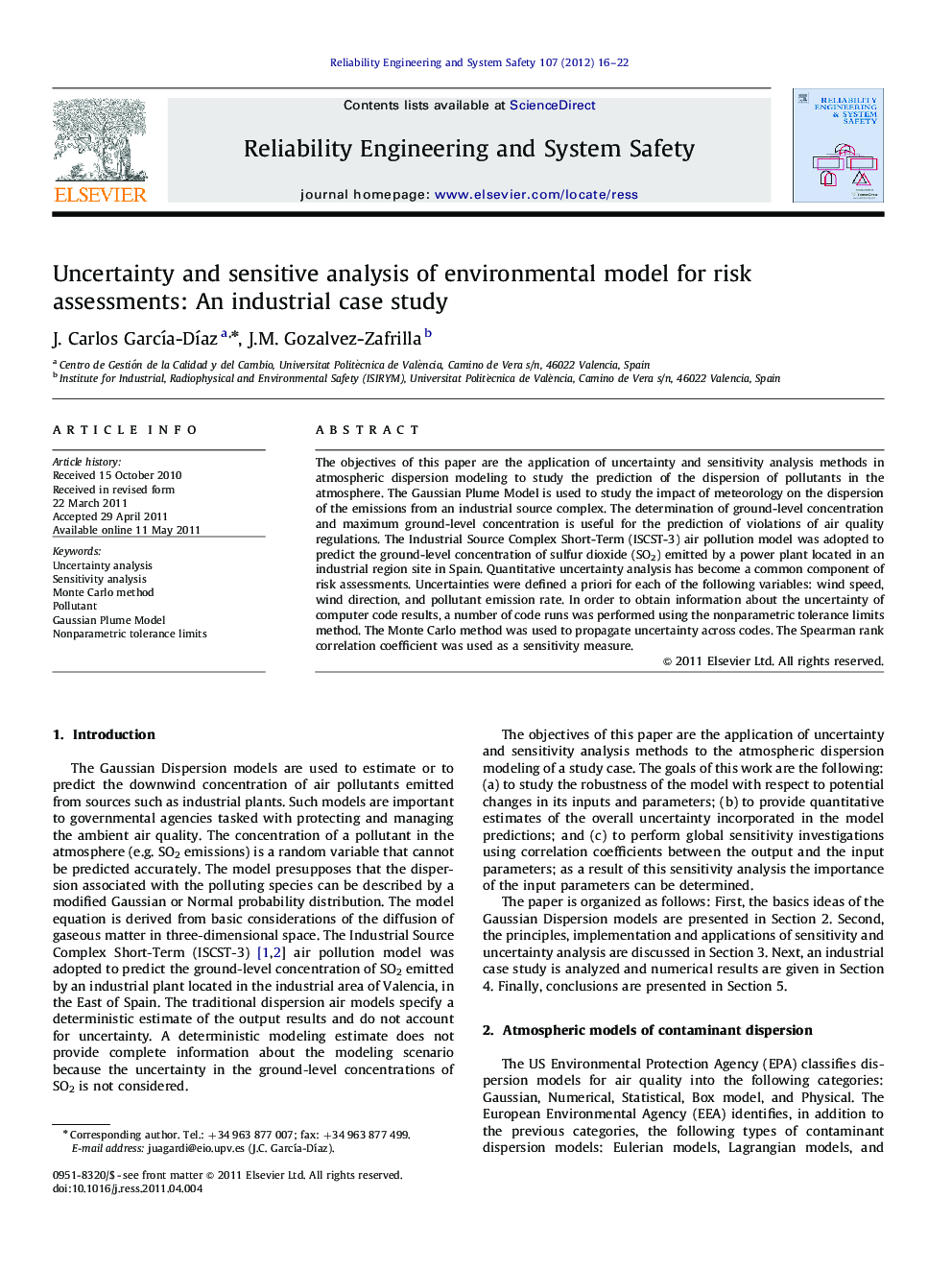| Article ID | Journal | Published Year | Pages | File Type |
|---|---|---|---|---|
| 806370 | Reliability Engineering & System Safety | 2012 | 7 Pages |
The objectives of this paper are the application of uncertainty and sensitivity analysis methods in atmospheric dispersion modeling to study the prediction of the dispersion of pollutants in the atmosphere. The Gaussian Plume Model is used to study the impact of meteorology on the dispersion of the emissions from an industrial source complex. The determination of ground-level concentration and maximum ground-level concentration is useful for the prediction of violations of air quality regulations. The Industrial Source Complex Short-Term (ISCST-3) air pollution model was adopted to predict the ground-level concentration of sulfur dioxide (SO2) emitted by a power plant located in an industrial region site in Spain. Quantitative uncertainty analysis has become a common component of risk assessments. Uncertainties were defined a priori for each of the following variables: wind speed, wind direction, and pollutant emission rate. In order to obtain information about the uncertainty of computer code results, a number of code runs was performed using the nonparametric tolerance limits method. The Monte Carlo method was used to propagate uncertainty across codes. The Spearman rank correlation coefficient was used as a sensitivity measure.
► We examine important uncertainties on the ground-level concentration of SO2. ► Ground-level concentration is very sensitive to wind speed and emission rate. ► Increasing wind speed will decrease ground-level concentration. ► Increasing emission rate will increase ground-level concentration.
